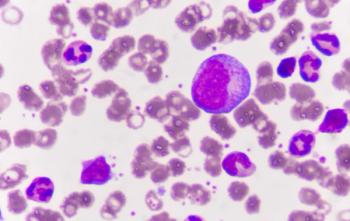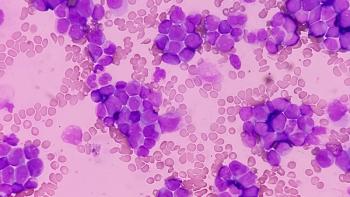
FDA Approves Frontline Lenvatinib for Unresectable HCC
The Food and Drug Administration (FDA) approved a supplemental new drug application for the multikinase inhibitor lenvatinib (Lenvima) for first-line treatment of patients with unresectable hepatocellular carcinoma.
The Food and Drug Administration (FDA) approved a supplemental new drug application for the multikinase inhibitor lenvatinib (Lenvima) for first-line treatment of patients with unresectable hepatocellular carcinoma (HCC).
This approval followed a delay, announced in May 2018, that was intended to allow the FDA additional review time. The application was based on data from the phase III REFLECT trial published in February 2018 in the Lancet. In the international, multicenter, randomized, open-label, non-inferiority trial, lenvatinib was noninferior to the established first-line standard of care, sorafenib (Nexavar). The median overall survival (OS) by investigator review with lenvatinib was 13.6 months compared with 12.3 months for sorafenib (HR, 0.92; 95% CI, 0.79-1.06).
Adding to these results, by investigator review, lenvatinib was superior to sorafenib for progression-free survival (PFS) and time-to-progression (TTP). The median PFS was 7.4 versus 3.7 months for lenvatinib and sorafenib, respectively (HR, 0.66; 95% CI: 0.57-0.77; P <.0001). TTP was 8.9 months for lenvatinib compared with 3.7 months for sorafenib (HR, 0.63; 95% CI, 0.53-0.73; P <.0001).
The REFLECT Trial
The REFLECT study randomized 954 patients with unresectable HCC to lenvatinib (n = 478) or sorafenib (n = 476). Lenvatinib was given at 8 mg per day for those weighing <60 kg and at 12 mg per day for those weighing ≥60 kg. Sorafenib was given at a 400 mg twice daily dose. The primary endpoint of the study was OS noninferiority.
Baseline characteristics were similar between the groups, with a median age of approximately 62 years and a predominant ECOG performance status of 0 (63%). The most common Child-Pugh class was A (99%) and 79% of patients had BCLC stage C disease. Twenty percent of patients had ≥3 sites of disease involvement, and half of patients had underlying hepatitis B infection. The median baseline AFP level was 133.1 ng/mL in the lenvatinib arm and 71.2 ng/mL in the sorafenib group.
The objective response rate (ORR) by investigator review was 24.1% with lenvatinib versus 9.2% with sorafenib (odds ratio [OR], 3.13; 95% CI, 2.15-4.56; P <.00001). The complete response (CR) rate was 1.3% in the lenvatinib group and 0.4% with sorafenib. The median duration of response was 5.7 months with lenvatinib and 3.7 months for sorafenib.
By masked independent imaging review, the median PFS was 7.3 versus 3.6 months for lenvatinib and sorafenib, respectively (HR, 0.64; 0.55-0.75; P <.0001). The median TTP in this review was 7.4 months with lenvatinib versus 3.7 months for sorafenib (HR, 0.60; 95% CI, 0.51-0.71; P <.0001).
The improvement in ORR was more dramatic in the independent assessment using modified RECIST criteria, at 40.6% with lenvatinib versus 12.4% for sorafenib (OR, 5.01; 95% CI, 3.59-7.01; P <.0001). The CR rate was 2.1% with lenvatinib compared with 0.8% for sorafenib in this analysis. By the RECIST v1.1 criteria, however, the independently reviewed ORR was 18.8% for lenvatinib versus 6.5% for sorafenib (OR, 3.34; 95% CI, 2.17-5.14; P <.0001).
Treatment-Emergent Adverse Events
Dose reductions due to treatment-emergent adverse events (TEAEs) were required for 37% of those in the lenvatinib arm and for 38% of those in the sorafenib group. Drug discontinuations due to TEAEs were needed for 9% and 7% of those in the lenvatinib and sorafenib groups, respectively.
The most common all-grade TEAEs between lenvatinib and sorafenib were palmar-plantar erythrodysesthesia (27% vs 52%, respectively), diarrhea (39% vs 46%), and hypertension (42% vs 30%). Grade ≥3 TEAEs were more common with lenvatinib versus sorafenib (57% vs 49%, respectively). There were more serious treatment-related TEAEs in the lenvatinib arm (18%) compared with sorafenib (10%).
The most common grade 3/4 TEAEs with lenvatinib and sorafenib, respectively, were hypertension (23% vs 14%), decreased weight (8% vs 3%), increased blood bilirubin (7% vs 5%), proteinuria (6% vs 2%), decreased platelet count (5% vs 3%), elevated aspartate aminotransferase (5% vs 8%), decreased appetite (5% vs 1%), diarrhea (4% vs 4%), and palmar-plantar erythrodysesthesia (3% vs 11%).
Prior indications for levantinib include treatment of patients with locally recurrent or metastatic, progressive, radioactive iodine‑refractory differentiated thyroid cancer (RAI-refractory DTC) and in combination with everolimus for the treatment of advanced renal cell carcinoma (RCC) following one prior anti‑angiogenic therapy.2
References
- Kudo M, Finn RS, Qin S, et al. Lenvatinib versus sorafenib in first-line treatment of patients with unresectable hepatocellular carcinoma: a randomised phase 3 non-inferiority trial [published online February 9, 2018]. Lancet. doi:10.1016/S0140-6736(18)30207-1.
- Lenvima website. http://www.lenvima.com/hcp/advanced-rcc/. Accessed Aug. 16, 2018.
Newsletter
Knowledge is power. Don’t miss the most recent breakthroughs in cancer care.
















































































